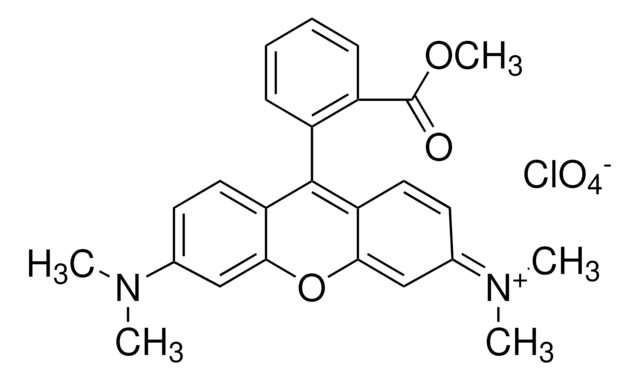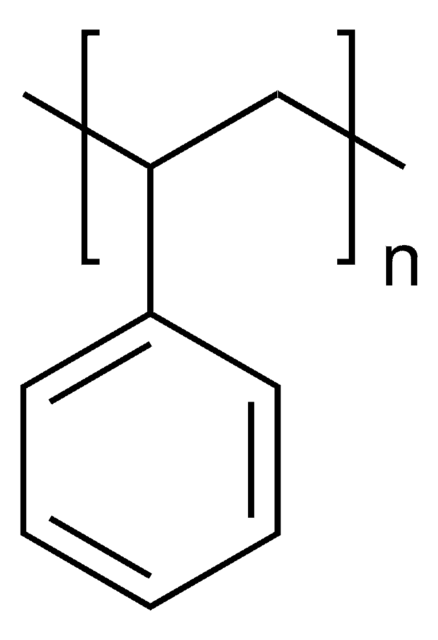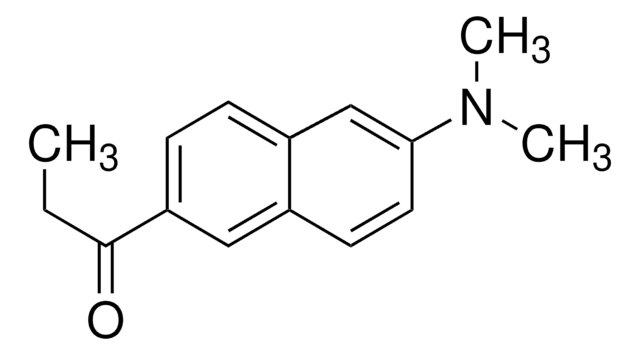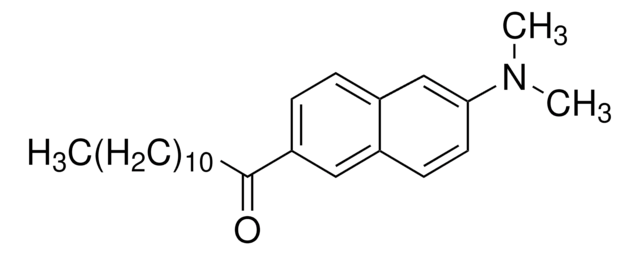87917
Tetramethylrhodamine ethyl ester perchlorate
suitable for fluorescence, ≥90% (HPCE)
Synonyme(s) :
TMRE, TMRE perchlorate
About This Item
Produits recommandés
Pureté
≥90% (HPCE)
Forme
solid
Solubilité
DMSO: soluble
alcohols: soluble
Fluorescence
λex 540 nm; λem 595 nm in DMSO
Adéquation
suitable for fluorescence
Température de stockage
2-8°C
Chaîne SMILES
[O-]Cl(=O)(=O)=O.CCOC(=O)c1ccccc1-c2c3ccc(cc3[o+]c4cc(ccc24)N(C)C)N(C)C
InChI
1S/C26H27N2O3.ClHO4/c1-6-30-26(29)20-10-8-7-9-19(20)25-21-13-11-17(27(2)3)15-23(21)31-24-16-18(28(4)5)12-14-22(24)25;2-1(3,4)5/h7-16H,6H2,1-5H3;(H,2,3,4,5)/q+1;/p-1
Clé InChI
NBAOBNBFGNQAEJ-UHFFFAOYSA-M
Description générale
The sorted cells containing TMRE perchlorate don’t interfere with the subsequent functional assays and hence are a preferred choice for the enrichment of functionally active, unbiased cell populations.
Application
TMRE perchlorate is also used to study Fullerene C 60 penetration into Leukemic Cells and the subsequent photoinduced Cytotoxic Effects.
Conditionnement
Autres remarques
Mention d'avertissement
Warning
Mentions de danger
Classification des risques
Acute Tox. 4 Oral - Eye Irrit. 2 - Skin Irrit. 2
Code de la classe de stockage
13 - Non Combustible Solids
Classe de danger pour l'eau (WGK)
WGK 3
Point d'éclair (°F)
Not applicable
Point d'éclair (°C)
Not applicable
Équipement de protection individuelle
dust mask type N95 (US), Eyeshields, Gloves
Certificats d'analyse (COA)
Recherchez un Certificats d'analyse (COA) en saisissant le numéro de lot du produit. Les numéros de lot figurent sur l'étiquette du produit après les mots "Lot" ou "Batch".
Déjà en possession de ce produit ?
Retrouvez la documentation relative aux produits que vous avez récemment achetés dans la Bibliothèque de documents.
Les clients ont également consulté
Articles
Nitric oxide (NO) as a signal transporter in neurons, endothelial cells and in the immune system.
Notre équipe de scientifiques dispose d'une expérience dans tous les secteurs de la recherche, notamment en sciences de la vie, science des matériaux, synthèse chimique, chromatographie, analyse et dans de nombreux autres domaines..
Contacter notre Service technique










